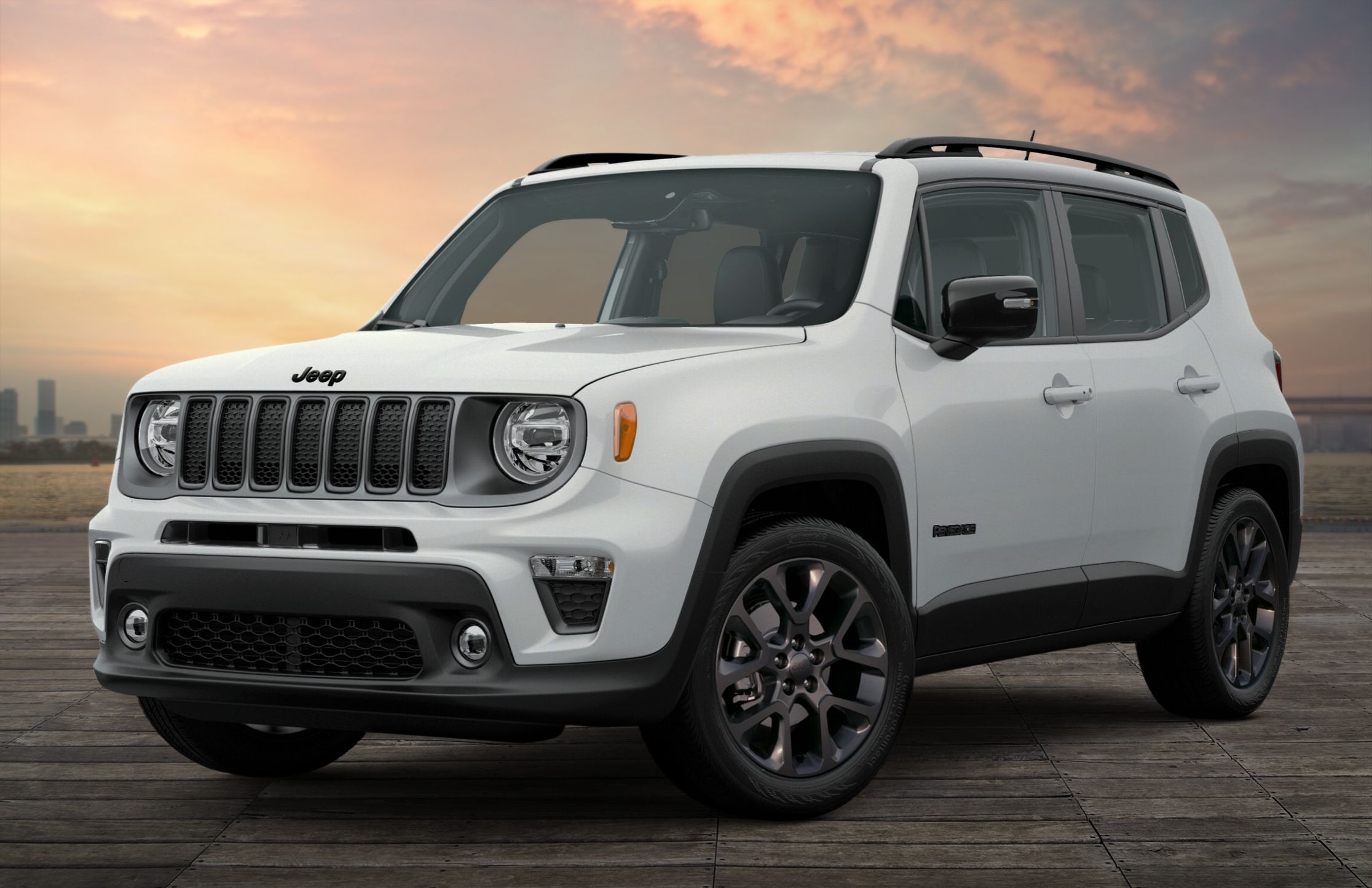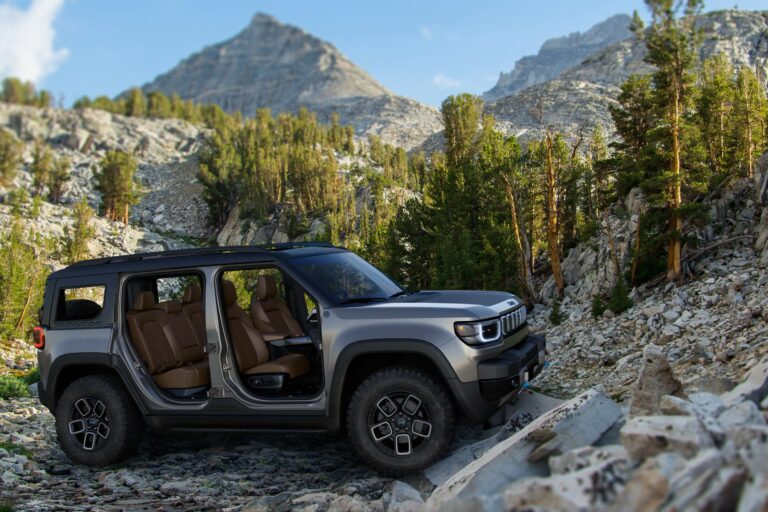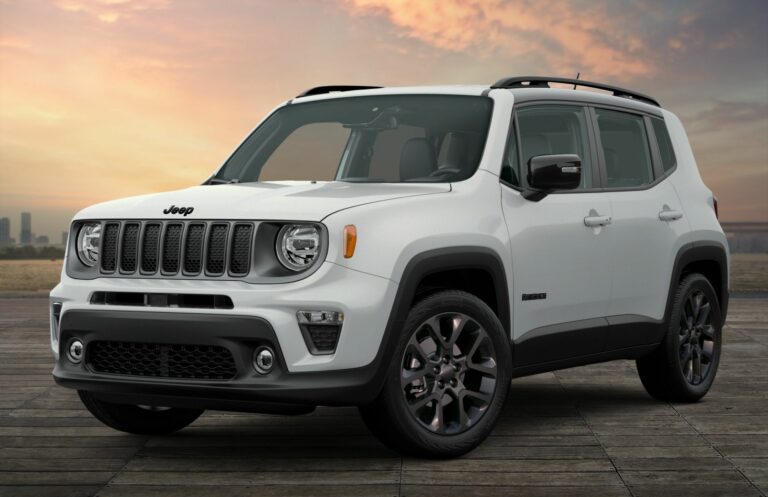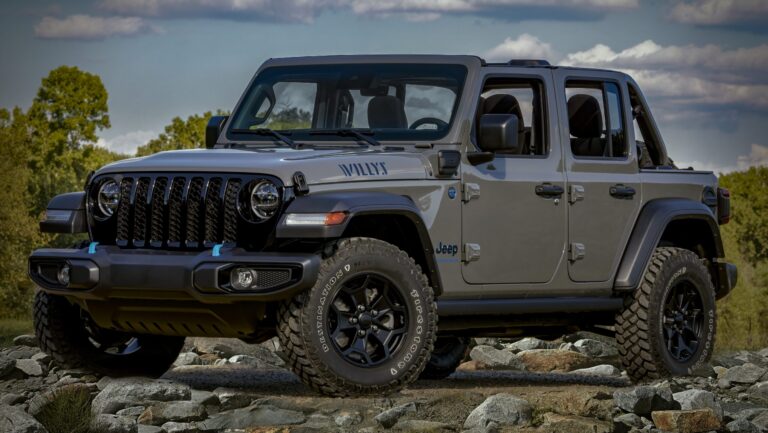Jeep Wrangler 2 Door Ride Quality: A Comprehensive Guide
Jeep Wrangler 2 Door Ride Quality: A Comprehensive Guide jeeps.truckstrend.com
The Jeep Wrangler, an undisputed icon of off-road capability, embodies rugged adventure and unparalleled freedom. While its prowess on challenging terrains is legendary, one aspect that frequently sparks discussion among enthusiasts and potential buyers alike is its ride quality, particularly concerning the nimble 2-door variant. Understanding the nuances of the Jeep Wrangler 2 Door’s ride quality is crucial for anyone considering this vehicle, as it directly impacts daily drivability, long-distance comfort, and overall owner satisfaction. This article aims to provide a comprehensive exploration of what defines the 2-door Wrangler’s ride, the factors influencing it, common characteristics, and actionable strategies for enhancement.
Understanding the Core of 2-Door Wrangler Ride Quality
Jeep Wrangler 2 Door Ride Quality: A Comprehensive Guide
When we talk about "ride quality," we refer to how comfortably a vehicle handles various road surfaces, absorbing bumps, isolating occupants from vibrations, and maintaining composure. For a vehicle like the Jeep Wrangler 2-door, designed from the ground up for extreme off-road performance, ride quality is approached differently than in a typical passenger car or even most SUVs. Its body-on-frame construction, solid axles, and relatively short wheelbase are engineered for maximum articulation, durability, and ground clearance, not necessarily for plush, sedan-like comfort.
The essence of the 2-door Wrangler’s ride quality lies in this inherent compromise. It’s a vehicle that prioritizes ruggedness, simplicity, and unyielding capability over refined on-road manners. Owners often describe it as "bouncy," "firm," or "connected to the road," which can be a charming characteristic for some and a significant point of contention for others. Embracing the Wrangler’s character means acknowledging that its ride quality is a direct reflection of its purpose-built design.
Key Factors Influencing 2-Door Ride Quality
Several fundamental design elements contribute to the unique ride characteristics of the 2-door Jeep Wrangler:
-
The Short Wheelbase: This is arguably the most significant factor. The 2-door Wrangler’s short wheelbase (approximately 96.8 inches for the JL model) makes it incredibly agile and maneuverable on tight trails, allowing for impressive breakover angles. However, on paved roads, a short wheelbase often translates to a choppier, more "hobby-horsing" ride, as the vehicle reacts more abruptly to road imperfections. Each bump is felt more distinctly and individually compared to a longer vehicle that can "bridge" over imperfections.
-
Suspension Design: Solid Axles and Coil Springs: The Wrangler utilizes a robust coil-spring suspension system with solid front and rear axles. While incredibly durable and capable of immense articulation off-road, solid axles can transmit more road vibrations and impacts directly into the cabin compared to independent suspension systems found in most modern vehicles. The coil springs, while offering good travel, are often tuned to be relatively firm to handle heavy loads and aggressive off-road impacts, contributing to a less forgiving ride on uneven pavement.
-
Tire Choice and Pressure: The type of tires fitted to a Wrangler has a profound impact on ride quality. Aggressive Mud-Terrain (M/T) tires, with their large, widely spaced tread blocks, excel in loose terrain but generate considerable road noise and often contribute to a harsher ride on pavement. All-Terrain (A/T) tires offer a better compromise, while street-oriented tires provide the quietest and smoothest ride. Furthermore, tire pressure is critical; over-inflated tires will exacerbate the choppiness and harshness, making every bump feel more pronounced.

-
Body-on-Frame Construction: This traditional method of vehicle construction, where the body sits on a separate, rigid frame, offers excellent durability and simplifies off-road modifications. However, it can transmit more road noise and vibrations into the cabin compared to modern unibody designs, which integrate the body and frame into a single, more rigid structure that often provides better NVH (Noise, Vibration, and Harshness) isolation.

Weight Distribution and Overall Lightness: The 2-door Wrangler is relatively lightweight compared to many SUVs, especially when unloaded. This lighter mass, combined with the short wheelbase, can contribute to a more "bouncy" or "unsettled" feeling, particularly over successive bumps or expansion joints.
-
Aerodynamics (or Lack Thereof): The Wrangler’s iconic boxy shape, while functional for off-road visibility and interior space, is not aerodynamically efficient. This results in noticeable wind noise, especially at highway speeds, and can contribute to buffeting, further impacting the perceived ride quality and driver comfort.

Common Characteristics and Challenges
Owners of 2-door Wranglers often describe several recurring ride quality characteristics:
- The "Wrangler Jiggle": This refers to a persistent, subtle vertical motion or bounciness, especially noticeable on less-than-perfect pavement. It’s a consequence of the short wheelbase and robust suspension.
- Road Noise and Wind Noise: Due to the less insulated cabin, removable roof panels, and blocky design, road noise (from tires and pavement) and wind noise can be quite prominent, particularly on highways.
- Steering Wander and Vagueness: Compared to rack-and-pinion steering systems found in most cars, the Wrangler’s recirculating ball steering can feel less precise, requiring more frequent minor corrections, especially at higher speeds or in crosswinds.
- Harshness Over Bumps: Sharp impacts, such as potholes or railroad tracks, can be felt distinctly and sometimes jarringly.
- Body Roll: With its higher center of gravity and relatively soft suspension tuning (for articulation), the Wrangler exhibits more body roll in corners than lower-slung vehicles, though it remains stable within its design parameters.
Strategies for Enhancing 2-Door Wrangler Ride Quality
While a 2-door Wrangler will never ride like a luxury sedan, there are numerous effective strategies to significantly improve its on-road comfort and composure:
-
1. Optimizing Tire Selection and Pressure:
- Tire Choice: If daily driving comfort is a priority, consider All-Terrain (A/T) tires over aggressive Mud-Terrain (M/T) tires. A/Ts offer a better balance of off-road grip and on-road manners, producing less noise and a smoother ride. For purely street use, less aggressive highway-terrain tires can further enhance comfort.
- Tire Pressure: This is a crucial, often overlooked, and free adjustment. The pressure listed on the door jamb is a maximum recommended pressure for optimal load capacity, not necessarily for ride comfort. Experiment with slightly lower pressures (e.g., 30-32 PSI for stock tires, adjusting based on tire size and load) to find a "sweet spot" that improves ride compliance without compromising safety or tire wear. Always consult your tire manufacturer’s recommendations and don’t go too low.
-
2. Aftermarket Suspension Upgrades: This is often the most impactful modification for ride quality.
- Shocks: Upgrading to high-quality aftermarket shock absorbers is paramount. Brands like Bilstein, Fox, Old Man Emu (OME), Rancho, and King offer a range of shocks tuned for different purposes. Many offer superior dampening characteristics, leading to a less bouncy and more controlled ride. Some are adjustable, allowing you to fine-tune compression and rebound.
- Coil Springs: While shocks handle dampening, springs determine ride height and stiffness. Aftermarket springs can be chosen with different spring rates to better match your vehicle’s weight (e.g., if you’ve added heavy bumpers) and desired ride characteristics.
- Full Suspension Kits: Many manufacturers offer integrated lift kits that include matched shocks, springs, and sometimes control arms, designed to work together for optimal performance and ride quality. Quality kits often provide a better ride than stock, even with a lift.
- Control Arms: After lifting, correcting suspension geometry with adjustable control arms can prevent issues like "caster wander" and improve steering feel and overall stability.
-
3. Steering System Improvements:
- Heavy-Duty Steering Stabilizer: This component helps dampen steering vibrations and impacts from the road, reducing steering wander and improving on-road feel.
- Upgraded Steering Components: Replacing stock tie rods, drag links, and track bars with heavier-duty aftermarket versions can tighten up the steering, reduce flex, and improve precision.
-
4. Adding Weight (Strategic): While it impacts fuel economy, adding some weight to the vehicle (e.g., heavy-duty steel bumpers, rock sliders, or a winch) can sometimes settle the ride, particularly at highway speeds, by increasing inertia. This is a trade-off, however, as it also affects acceleration and braking.
-
5. Noise, Vibration, and Harshness (NVH) Reduction:
- Sound Deadening Mats: Applying sound deadening material (e.g., Dynamat, Kilmat) to the floor, doors, and rear cargo area can significantly reduce road noise and vibrations transmitted into the cabin.
- Insulated Headliners: Adding an insulated headliner to the hardtop can help reduce heat transfer and further dampen sound, making the cabin quieter and more comfortable.
-
6. Driving Habits: Understanding the vehicle’s dynamics and adapting your driving style can also improve perceived ride quality. Anticipating road imperfections, avoiding sudden maneuvers, and maintaining proper tire pressure are simple yet effective strategies.
2-Door vs. 4-Door: A Quick Comparison
It’s worth noting that the 4-door Wrangler Unlimited generally offers a noticeably smoother ride on pavement compared to its 2-door sibling. This is primarily due to its significantly longer wheelbase (around 118.4 inches for the JL Unlimited). The longer wheelbase helps the vehicle "bridge" over bumps more effectively, resulting in less pitching and a more composed ride on highways. However, the 2-door retains its unique advantages in terms of maneuverability, tighter turning radius, classic aesthetic, and ease of parking, making it the preferred choice for many despite the ride quality nuances.
Practical Advice and Actionable Insights
- Define Your Priorities: Before embarking on upgrades, honestly assess your primary use case. Is it a dedicated off-roader that occasionally sees pavement, or a daily driver that will occasionally hit trails? Your answer will guide your choices.
- Research Thoroughly: The aftermarket for Wranglers is vast. Read reviews, watch videos, and consult forums specific to your Wrangler generation (JK, JL) before purchasing any parts. Not all upgrades are created equal.
- Start Small: Begin with less expensive and easier modifications like optimizing tire pressure and considering a different tire type. If that’s not enough, move on to a quality steering stabilizer before considering a full suspension overhaul.
- Professional Installation: For complex suspension or steering upgrades, consider professional installation to ensure proper alignment, torque settings, and safety.
- Don’t Expect a Luxury Car: Even with the best modifications, a Wrangler will still ride like a Wrangler. The goal is to improve comfort and control within the vehicle’s inherent design limitations, not to transform it into something it’s not.
Estimated Costs of Ride Quality Improvements/Upgrades
The cost of improving your 2-door Wrangler’s ride quality can vary significantly based on the quality of parts, brand, and whether you do the installation yourself or pay for labor. Here’s a general estimate:
| Improvement Category | Description | Estimated Cost Range (Parts Only) | Notes |
|---|---|---|---|
| Tire Optimization | Switching from M/T to A/T or Street-oriented tires | $800 – $1,500+ (set of 4) | Varies greatly by size, brand, and type. |
| Tire Pressure Adjustment | Checking and adjusting pressure to optimal comfort levels | FREE | Most impactful "free" modification. |
| Steering Stabilizer | Upgrading to a heavy-duty, performance steering stabilizer | $100 – $300 | Relatively inexpensive, noticeable improvement for steering feel. |
| Aftermarket Shocks | Replacing stock shocks with quality aftermarket units (e.g., Bilstein, Fox) | $400 – $1,000+ (set of 4) | Single most effective suspension upgrade for ride quality. |
| Aftermarket Coil Springs | Replacing stock springs with progressive or softer-tuned springs | $300 – $600 (set of 4) | Often paired with shocks; can adjust ride height too. |
| Full Suspension Lift Kit | Quality kit including shocks, springs, and sometimes control arms | $1,000 – $3,500+ | Comprehensive solution; choose kits known for ride quality. |
| Adjustable Control Arms | Correcting geometry after lifts, improving caster/driveline angles | $400 – $1,200+ (set) | Essential for proper alignment and stability with lifted suspensions. |
| Sound Deadening Material | Mats for floor, doors, cargo area, and hardtop insulation | $150 – $500+ | DIY-friendly; significant reduction in road and wind noise. |
| Heavy-Duty Steering Components | Upgraded tie rod, drag link, track bar | $300 – $1,000+ (per component) | For ultimate steering precision and durability. |
Note: These prices are estimates for parts only and do not include labor costs, which can add anywhere from $500 to $2000+ depending on the complexity of the installation.
Frequently Asked Questions (FAQ)
Q1: Is the 2-door Wrangler uncomfortable for daily driving?
A1: "Uncomfortable" is subjective. It’s certainly not as smooth or quiet as a car or a unibody SUV. However, many owners daily drive their 2-door Wranglers and find them perfectly acceptable, especially after making a few targeted improvements. It’s more about embracing its unique characteristics than expecting a plush ride.
Q2: Will a lift kit make the ride worse?
A2: Not necessarily. A poorly designed or cheap lift kit can definitely degrade ride quality. However, high-quality lift kits from reputable brands (e.g., AEV, MetalCloak, Old Man Emu, Rock Krawler) are engineered to improve both off-road performance and on-road ride quality by providing better shocks, springs, and corrected geometry.
Q3: What’s the most effective single upgrade for ride quality?
A3: Upgrading to high-quality aftermarket shock absorbers is widely considered the most impactful single modification for improving the 2-door Wrangler’s ride quality. They directly control the vehicle’s dampening and rebound, leading to a more controlled and less bouncy ride.
Q4: Does tire pressure really make a difference?
A4: Absolutely. Over-inflated tires will make the ride harsh and bouncy, while properly inflated tires (often slightly lower than door-jamb recommendations for comfort) can significantly smooth out the ride. Experiment to find your optimal pressure.
Q5: Can I achieve a luxury car ride in a Wrangler?
A5: No. Due to its fundamental body-on-frame, solid-axle design and short wheelbase, a 2-door Wrangler will never ride like a luxury sedan or a modern crossover. The goal of ride quality improvements is to enhance comfort, control, and reduce harshness within the vehicle’s inherent design, not to transform its core character.
Q6: Should I get a 4-door if ride quality is my main concern?
A6: If on-road ride comfort is your absolute top priority and you don’t need the 2-door’s specific maneuverability advantages, the 4-door Wrangler Unlimited will generally provide a noticeably smoother and more stable highway ride due to its longer wheelbase.
Conclusion
The Jeep Wrangler 2 Door’s ride quality is a unique blend of compromise and capability. It’s a vehicle purpose-built for adventure, and its ride characteristics are a direct consequence of that design philosophy. While it may not offer the plush comfort of a typical family SUV, its inherent ruggedness and off-road prowess are unparalleled.
For those who embrace the "Jeep thing," the ride quality is simply part of the package. Moreover, with a thoughtful approach to tire selection, tire pressure management, and strategic aftermarket upgrades to the suspension and steering, the 2-door Wrangler’s on-road manners can be significantly improved. Ultimately, understanding and respecting the 2-door Wrangler’s design DNA is key to appreciating its ride quality, transforming potential challenges into opportunities for personalization and an even more enjoyable ownership experience.






